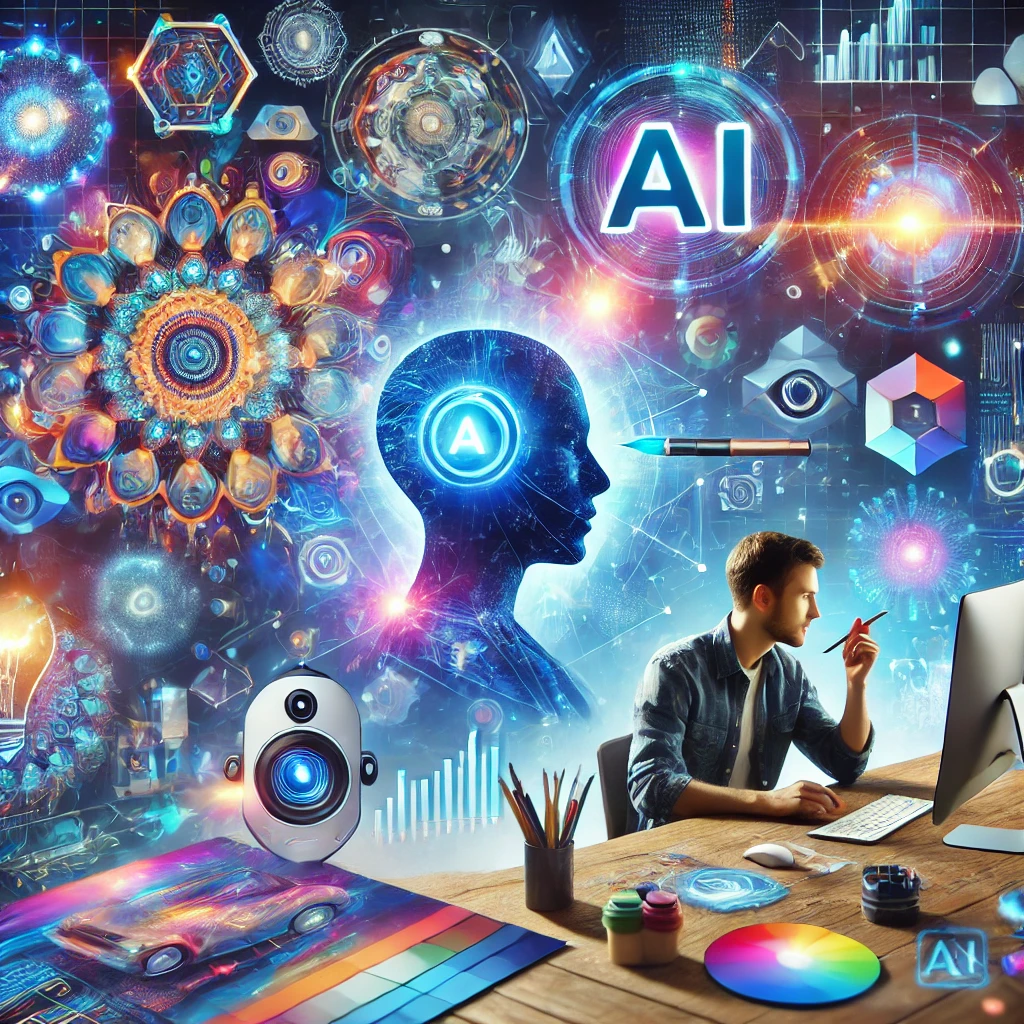Artificial Intelligence for Climate Change: Pioneering a Sustainable Future.
Table of Contents
- Understanding Climate Change
2.1 Natural Science of Global Climate Change
– 2.2. Effects on Ecosystems and Human Societies
- Artificial Intelligence’s Role in Climate Change
– 3.1. Definition of Artificial Intelligence
3.2. How AI is Revolutionizing Environmental Science
- AI in Climate Modeling and Forecast
– 4.1. Machine Learning into Climate Models
- Predictive Analytics for Extreme Weather Events : Include real-time data driven or
- AI in Environmental Monitoring and Data Collection
– 5.1. Satellite Imagery and Remote Sensing Technologies
– 5.2. Real-Time Environmental Monitoring
- AI into Renewable Energy Solutions
– 6.1. Optimization of Renewable Energy Generation
6.2. Energy Storage and Grid Management
- AI-Enhanced Climate Mitigation Strategies
– 7.1. Reducing Carbon E
-7.2. Energy Efficiency Improvement
– 7.3. Sustainable Agricultural Practices
- Artificial Intelligence in Climate Change Adaptation
-8.1 Disaster Risk Reduction and Management
8.2. Improving Infrastructure
– 8.3. Management and Conservation of Ecosystems
9.Vocabulary: Settings For the student to understand
- 9.1. Green Horizons Initiative from IBM
9.2. Environmental Insights Explorer from Google
– 9.3. The Climate Corporation’s Data-Driven Agriculture
- Challenges and Limitations of the Intervention
10.1. Data Privacy and Security Issue
– 10.2. Issues Related to AI Bias and Equity
– 10.3. Computational Resources and Environmental Impact
- Future Directions and Innovations
11.1. Progress of the Artificial Intelligence Technologies
– 11.2 AI Integration with Emerging Technologies
– 11.3. Policy and Ethical Implications 12. Conclusion
- The Introduction
Climate change is arguably the challenge of our time that requires solutions—creative ones. As temperatures increase, weather patterns become erratic, and ecosystems change, the Artificial Intelligence domain is being predominantly featured as one key fighting tool to adapt and mitigate challenges pertaining to climate change.
The potential of AI to process big data, recognize complex patterns, and provide predictive insight radically changed our perspective on environmental problem-solving. This paper looks at how AI is directed towards climate change and the applications in both its mitigation and adaptation strategies: reviewed case studies, together with challenges and future directions in this crucial field.
- Appreciate from Human Vantage
2.1. The Science of Climate Change
Climate change refers to the long-term change in average weather patterns, including temperature, precipitation, and other storm conditions, on planet Earth. The key contributor to the current trend in climate change is the rise of greenhouse gases: carbon dioxide and methane, in significant proportions, are brought about by human activities such as burning fossil fuel and deforestation. These gases trap heat from the sun’s rays in our atmosphere, causing the earth to warm up.
The IPCC has pointed out that without a significant reduction in greenhouse gas emissions, the increased global temperature will be dirty and bring about colossal environmental/societal damages, seen in rising sea levels, reduced glaciers, frequent and intensified heatwaves, and changes in rainfall patterns.
2.2. Impacts on Ecosystems and Human beings
The impacts of climate change run deep into almost every respect. Ecosystems are witnessing a shift in species distribution, changes in the timing and patterning of migration, and rise of extinction rates. Coral reefs are bleaching, glaciers are retreating, and forests are swept by more numerous and hard fires.
Indeed, human societies suffer from those effects. Vulnerable conditions have been believed to affect most exposed people in vulnerable conditions, especially by these highly dramatic weather phenomena, which are considered hurricanes, floods, and heat waves. Against a background of rising seas, it has been believed, such changing yields risk food insufficiency, entirely resulting in poor subsistence within communities residing in coastal areas. Moreover, to make things worse, climate change will target low-income and marginalized communities.
- The Function Artificial Intelligence Serves in Climate Change
3.1. What is AI
Artificial Intelligence entails all the processes where different technologies mimic the human mind’s intelligence processes in learning, reasoning, and problem-solving. AI systems comprise of algorithms and computational models that engage in handling data, recognizing patterns, and making prognostications. Machine learning is one application under artificial intelligence, where algorithms are trained within the context of learning from data to increase performance as use cases increase over time.
AI could be applied to areas such as natural language processing, computer vision, robotics, predictive analytics, and more. Moreover, AI is appropriately applicable iteratively in the context of climate change, as it would be able to manage vast bodies of data and deliver impact insights.
3.2. How AI is Changing Environmental Science
Artificial intelligence is reshaping earth science as the intelligence augments our present, rather statically modeled-on, monitoring and response to climate hazards. Uses would improve forecasting of climate, further enhancing energy systems, which will finally lead to adaptive strategies. Artificial intelligence, with its predictive insights for these gigantic amounts of data, indeed is considered an imperative tool now in the hands of fighters against climate change.
For example, AI can make use of satellite information to accurately monitor information changing deforestation, predict climate impacts on agricultural productivity, and optimize the performance of renewable energy. With this, a more profound insight is going to be provided to the scientist and policy maker in the development of a more effective way of dealing with the environmental processes and ways of resolving climate change challenges.
- AI in Climate Modeling and Forecasting
4.1. Improving Climate Models with Machine Learning
Pertinent climate models indicate a critical problem using them toward the prediction of the future scenario and developing an understanding of potential impacts. Traditional models rely on mathematical simulations following basic physical principles but suffer from the complexity of the climate system and data availability.
Machine Learning can greatly enhance climate models by analyzing reams of historical data to find patterns and trends, which can elude conventional methods. Algorithms like neural networks and ensemble methods can be used to process data coming from large datasets collected by satellites as well as ocean sensors in order to make an even better prediction of climate.
For instance, AI models might exhibit enhanced temperature change trends, precipitation patterns, and frequency of extreme weather events through the ingesting of data coming from very disparate arrays and applying advanced statistical estimations. Such integration of AI enables more accurate and detailed climate forecasting.
4.2. Predictive Analytics for Extreme Weather Endangered Events.
Predictive analytics based on AI improves significantly the forecasting of extreme weather events, such as hurricanes, floods, and heatwaves. Machine learning algorithms sift through historical weather data, actual current atmospheric conditions, and real-time sensor input to derive probability ratios on the eventuality and severity of the toll on the livelihood and properties of people.
Such early warning from AI-based systems can play a role in offering alertness at the right time so that communities can be prepared and ready. For example, models could be developed that predict the intensity of the hurricane and the path it’s going to track on such a path in order to allocate resources proficiently.
- The study of AI in environmental monitoring and data collection
5.1. Remote Sensing Technologies and Satellite Imagery
AI is revolutionizing environmental monitoring with improvements in satellite imagery and remote-sensing technologies. Next-generation sensors, AI-embedded, that fly in satellites can be set to capture the image of any spot on Earth’s surface in excellent detail to provide information on land use and vegetation, together with changes experienced in the environment.
It can further process these images for analyzing deforestation changes, urban expansions, and water bodies. For example, the rate of such deforestation processes in tropical forests can be followed by AI, which will contribute much to saving these important areas in terms of information for nature conservancy and policy-making.
5.2. Real-Time Environmental
With this, real-time monitoring becomes important for tracking and responding with the changing dynamics of the environment related to climatic issues. AI systems analyze data to give up-to-date information regarding environmental conditions from the weather stations’, sensors’, and satellites’ data.
AI simultaneously tracks the quality of populations, air quality. AI also monitors the level of pollution in the atmosphere. For example, AI can assess the impact of the rise in temperature on ecosystems. Air quality and its monitoring for health outcomes are performed by systems energized by AI, which are capable of data assimilation in relation to the concentrations of particulate matter and greenhouse gases in the atmosphere.
- AI for Renewable Energy Solutions
6.1. Renewable Energy Production Optimization
The very switchover connecting it with renewable sources is quintessential to minimize greenhouse gas emissions and hence, climate change. AI can be employed to optimally generate renewable energy, such as that stemming from solar and wind sources, in compliance with the weather forecast, load demand, and system performance.
Weather conditions and past data can be used to predict the power output of various energy sources. AI, for example, can forecast emerging amounts of solar energy by analyzing data about the present level of cloud cover and radiant sunshine and might, therefore, smoothen the integration of solar energy into the grid.
It can also optimize solar panels and wind turbines in the positioning and orientation for maximizing energy. Depending on the localized weather pattern and geographic conditions, AI gives a recommendation on the best location and configuration of infrastructure deployment.
6.2. Energy Storage and Grid Management
Reliable renewable energy will be realized through optimized energy storage and grid management. AI can help optimize energy storage systems using particular algorithms to predict the energy demand and optimize the charging and discharging cycle.
AI-powered smart grids will be able to manage energy distribution with even greater efficiency, as AI balance supply and demand, and assimilate renewable sources of energy to respond to grid fluctuations on an immediate basis. This is beneficial for the reduction of energy waste and stabilization on the overall grid.
One illustrative instance is it can optimize battery storage systems to predict a need for extra energy when demand is high, so it stores up energy which otherwise would be wasted, thus ensuring that the energy is available when needed and at the same time reducing the use of fossil fuels.
- AI in Climate Change Mitigation Strategies
7.1. Decrease in Carbon emissions

AI will help in reducing carbon emissions on a cross-sectoral dimension. In industrial processes, AI will sensibly optimize the use of resources to abate energy use and hence carbon emissions. For instance, it can analyze data in manufacturing processes to identify inefficiencies and give recommendations on improvements.
It optimizes routes for vehicles, hence saving quantum fuel and emissions in the transport sector. AI-driven systems could further support the development of electric and autonomous vehicles, in so doing, reducing the carbon footprint in transportation.
AI can further contribute to carbon capture and storage technologies by optimizing the processes implicated in capturing and storing CO2 emissions from industrial sources. That,
This includes increasing the efficiency of systems to capture carbon and finding the best-safe storage locations.
7.2. Energy Efficiency Enhanced
The improvement of energy efficiency is a vital tool in the toolbox for struggle against climate change. AI technologies offer immense prospects to improve energy efficiency in different sectors, ranging from buildings and industrial installations to transport systems.
Smart thermostats and architectural lighting control systems, being AI-driven, can give directions about energy use with regard to tenant occupancy patterns as well as events noted in weather forecasts, instruct usage of heating, cooling, or lighting, and possibly up-regulate or down-regulate according to comfort using algorithms from the artificial intelligence field, by lessening the energy used.
This way, it will be feasible within industrial environments to analyze data related to energy consumption patterns and recommend means of improvement, including energy-saving interventions. This can potentially lead to a huge reduction in energy use and associated operating costs.
7.3. Sustainable Agriculture
AI also can play a role in supporting agricultural sustainability to encounter climatic change. Ai technologies optimize the agricultural process, reduce the use of resources, while at the same time minimizing the environmental impact.
Data received in this AI-enabled precision farming are from a wide range of sources that envelop sensors, satellites, and drones and facilitate monitoring the status of crops, soil, and weather. Current-based datasets will provide scope for artificial intelligence to come to the rescue and enable real-time analysis for providing actionable insights in regards to irrigation schedules, upcoming outbreaks of pests attacking plants, and other sorts of optimizations, improving crop yield.
Analyzed soil health data, land-use, and biodiversity data can also be used by AI to support sustainable land management. This enables the farmers to make informed decisions on land usage and land conservation, consequently encouraging sound and sustainable agricultural practice while minimizing the environmental effects.
- AI for Climate Resilience
8.1. Disaster Risk Reduction and Management
AI can also enhance disaster risk reduction and management in the improvement of forecasting, systems for early warning, and ways of response through machine-learning algorithms capable of being analyzed regarding historical disaster data, current environmental conditions, and socio-economic factors leading to the probable effects.
AI-powered, timely early warning systems may act against the cataclysmic events that roam the face of the Earth, such as floods, hurricanes, and wildfires. For example, based on the data of satellite images and weather data, the AI algorithms can detect the risk of flooding and in a timely fashion suggest evacuation plans.
It can further assist in post-disaster recovery through damage assessment and the underlying support for the efficient and effective conduction of respective disaster responses.
8.2. Enhancing Infrastructure Resilience
Resilient infrastructure is crucial for devising adaptations to the effects of climate change. AI can help with this by enabling the processing of the data on conditions of the environment, performance of infrastructures, and the risks that are linked with them.
AI could work in the design and maintenance of infrastructure by pointing out possible vulnerabilities and hence giving recommendations for improvements. For example, from an analysis of sea-level-rise and storm-surge data, one might discern how AI—a GUIDE Flood-R drives infrastructure design vis-à-vis withstanding floods in coastal areas.
Also, data can be analyzed about the asset performance, maintenance needs, and risk factors using AI to make such infrastructure optimally perform, the main function being to support and survive climatic challenges.
8.3 Ecosystem Management and Conservation
AI is thus made a crucial tool for managing and guarding ecosystems by analyzing channeled distributions of species, habitat conditions, and environmental changes. In that respect, machine learning algorithms within AI process information from remote sensing technologies, field surveys, and citizen science initiatives to monitor or protect the state of ecosystems.
It may be beneficial in ways of conservation management by identifying and monitoring endangered species, acting as a watchdog for illegal activities like poaching and deforestation, and checking the different magnitudes of impacts climate change has had on various ecosystems. In this regard, for example, AI applications conduct a satellite-image analysis for monitoring the rates of deforestation and advisement on conservation policy.
Additionally, AI can provide a possible elevation of Ecosystems Management through simulation of the effects of climatic changes on the ecosystems, and recommend adaptive mechanisms of the affected ecosystem so that a conservation process is effective and remains relevant to the altered environmental conditions.
- Case Studies and Applications
9.1. Green Horizons by IBM
For example, IBM’s Green Horizons Initiative applies AI to solve issues related to climate change. It is put into use around the development of better systems in environmental monitoring, climate modeling, energy management, forecasting, and emergency preparedness. Its AI-powered systems will derive insights related to air quality, various climate patterns, and energy usage through the analysis of satellite, sensor, and associated data.
Another major application for the Green Horizons Initiative is the air monitoring system, in which real-time data are shown to be open for release and pollution forecasting to its populace. These data would therefore help in deciding on measures, at the policy and business decision-making levels, concerning reduction mechanisms that work towards clean air quality and low emissions.
9.2 Google Environmental Insights Explorer
For example, the Environmental Insights Explorer created by Google analyzes data on urban emissions, energy use, and transport pattern trends to guide the creation of actionable insight for cities looking to cut away at their carbon footprint and ensure they can remain viable and sustainable.
For example, the likely impacts of various climate actions could be predicted, ranging from the advent of electric vehicles to building energy efficiency. It enables the city to develop data-centered strategies for reaching sustainability criteria.
9.3. Data-Driven Agriculture at The Climate Corporation
AI is the core of The Climate Corporation, a business delivering data-driven agriculture tools within Bayer. Its AI-powered platform provides farmers with insights regarding weather patterns, soil conditions, and crop health, aiding them to take better decisions on planting, irrigation, and pest management.
These algorithms within the platform, using weather forecasts, satellite images, and sensors in the field, give a recommendation for crop yield optimization while minimizing environmental impact. It makes agriculture sustainable while increasing food security.
- AI For Climate Change: The Deep Present Challenges and Limitations
10.1 Concerns of Data Privacy and Security
The scale of the AI to which climate data has grown brings concerns about privacy and security in front of the very important details that are measured. The main point is to keep sensitive information secure during data collection, storage, and usage, in order for the public to trust in that particular process.
Data privacy, on the other hand, may be compromised by the risk of revelation of personal details, coupled with possible leakage of other related data in the process. How to tackle these issues, provide people with a safety net alongside trust, and assure an appropriate use of AI in climate change is by having robust data protection in compliance with international regulations.
10.2. AI Bias and Equity
It is also the case, in some circumstances, that the AI systems will reflect the bias in the data they are trained on, making it likely that they will deliver inequitable outcomes. Overcoming AI bias is part of making climate change solutions fair and effective for all communities. Another thing that it raises concerns about is equity — equity issues that could arise if AI-driven solutions are designed in favor of a percentage of the population at the expense of another percentage. Design and Implement AI to Also Account for Social and Environmental Justice, Which Is to Say It Has to Be Fair in Its Benefits Across Different Populations.
10.3 Computational Resources and Environmental Impact
AI technologies demand an enormous amount of computation and actually have an ecological impact, somewhat. The training of complex AI models requires a massive amount of energy and could contribute to carbon emissions. Therefore, less energy-consuming algorithms should be developed, computational processes optimized, and sustainable practices in AI development explored to alleviate these impacts. This would include the use of renewable energy sources and increasing the efficiency of data centers.
- Future Directions and Innovations
11.1. Advancement in AI Technologies
Developments in the respective field are continually evolving and with innovations emerging at the speed of light bound to further better solutions regarding climate change. These advances in machine learning algorithms, natural language processing, and data analytics will verily bring accuracy and improve the practical application of AI in climate science. For example, deep learning methods could, in turn, enhance the accuracy of climate modelling, and advanced AI-powered sensor technologies could boost environmental monitoring. Ongoing research and development in AI will have an important role in addressing climate change challenges.
11.2 Harnessing AI with Emerging Technologies
Further combined with other emerging technologies, like the Internet of Things, blockchain, and augmented reality, AI can only mean novel approaches at mitigating or adapting to climate change. Such sensors joined with AI might ascertain environmental data in real time, while blockchain technology can enhance transparency with carbon trading and emissions reporting. The AI-driven AR applications will get to visualize the impacts that will ensue from the impacts of climate change more vividly, bettering involvement right at the public level on so many ways people will be forced to take action on climate change. These integrations are going to change the wave for AI’s further potential applications—including climate challenges.
11.3. Policy and Ethical Consider
Ergo, with the increased AI between technologies for climate mitigation change, there is equally a call in setting policy and ethical agenda. This, along with the development of policies to guide the application of AI in environmental science, also includes setting bases to ensure data privacy issues and others on fairness toward many steps that shall lead to responsible and useful deployment of AI. This includes transparency in AI algorithms, reducing biases, and engaging relevant stakeholders in decision-making processes. If such concerns are indeed heeded, safety and the prevention of unwanted impacts that would defeat the purpose of such innovation will be assured.
- Conclusion

Innovation on artificial intelligence presents a powerful tool in combating climate change. Further presented are examples through mitigation and adaptation, including improvements in climate models, renewable systems, support for sustainable agriculture, and sustainable management of disasters—two applications of AI. Yet there exist a lot of challenges for the deployment of AI in climate change, that include data safety concerns, explanation and mitigation of bias, and management of computational resources. We can unlock new opportunities for sustainable and resilient future-creating, using all of these previous three challenges and continually developing the technology of the day. Going forward therefore, the collaboration between science, policymakers, and technology developers must be guaranteed in the framework of the responsible and effective use of AI in the fight against climate change. Building with continued innovation, together with a commitment to ethical practices, AI can have the most meaningful influence in bringing about a way towards a genuinely sustainable world for generations.
BY: ZAIN SHAFIQ

 Cart is empty
Cart is empty 

Leave A Comment